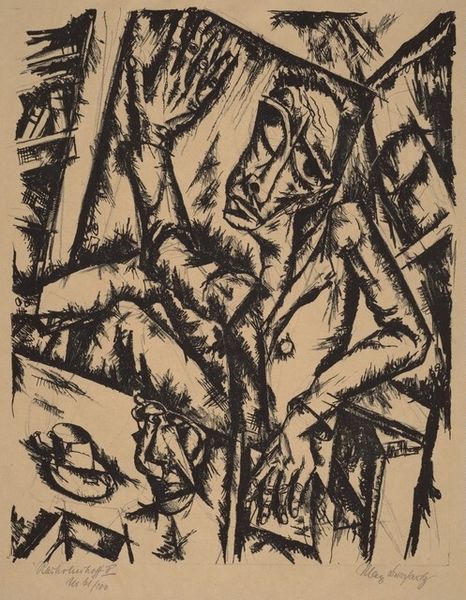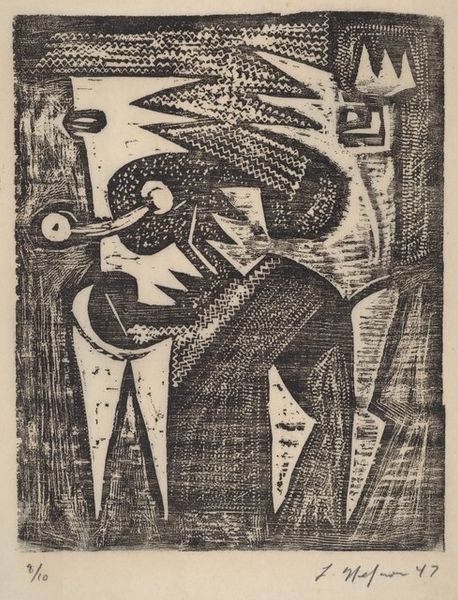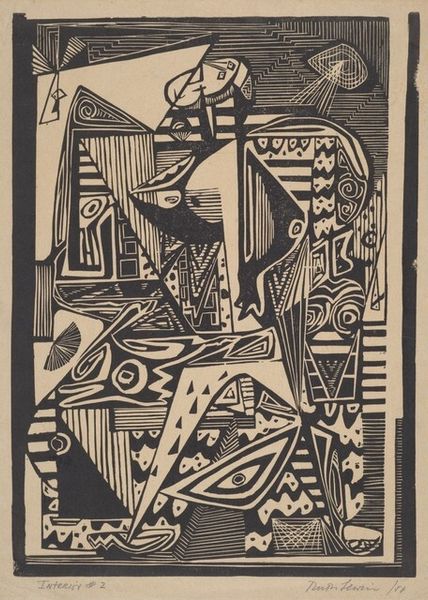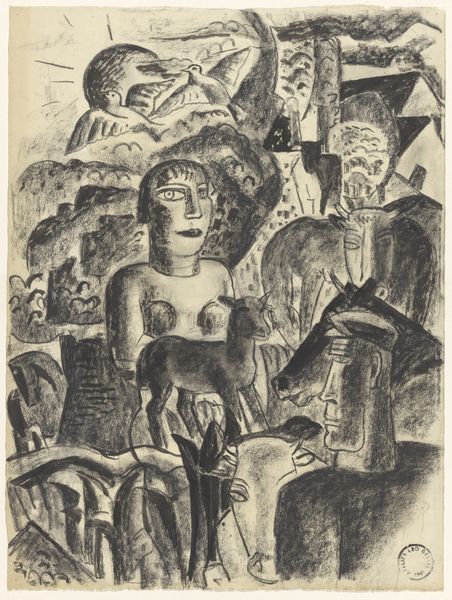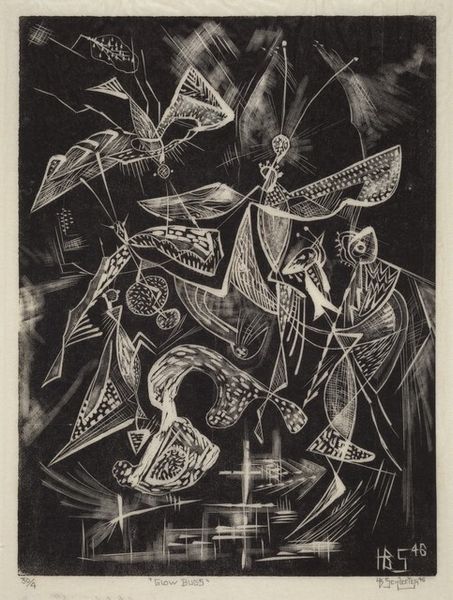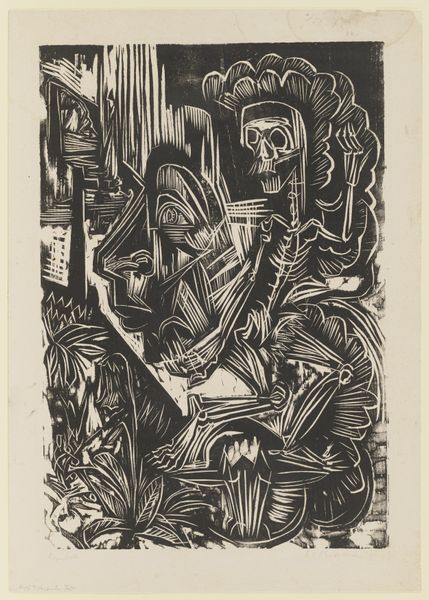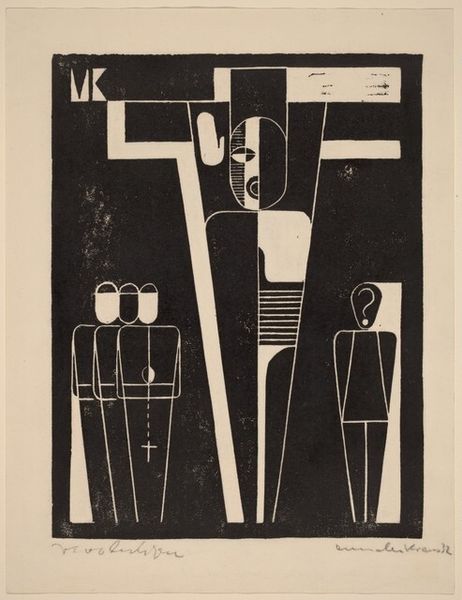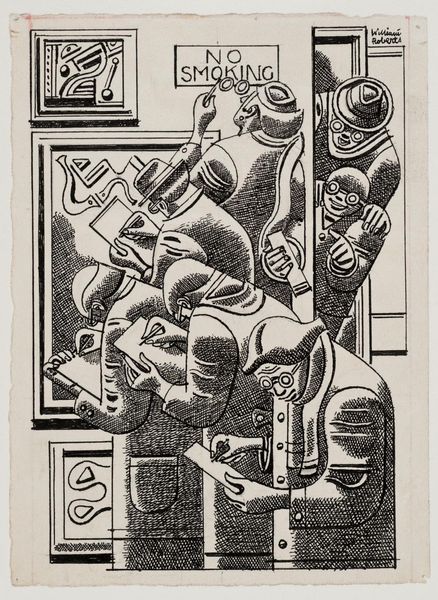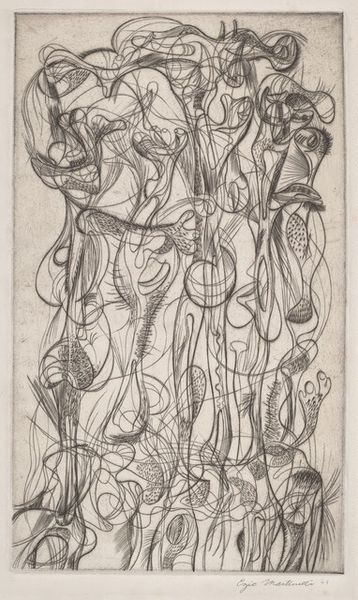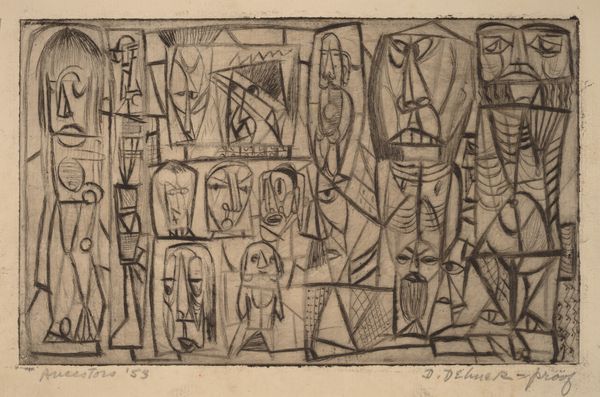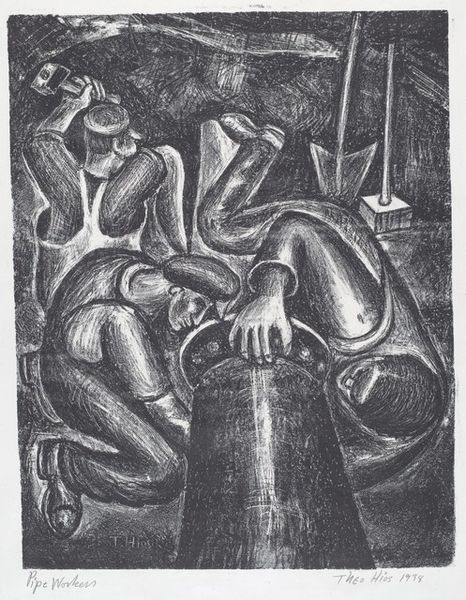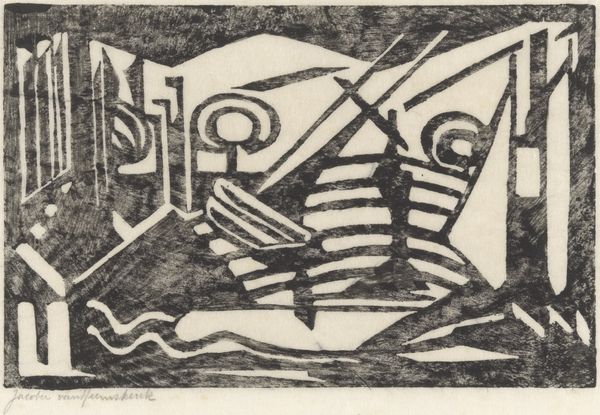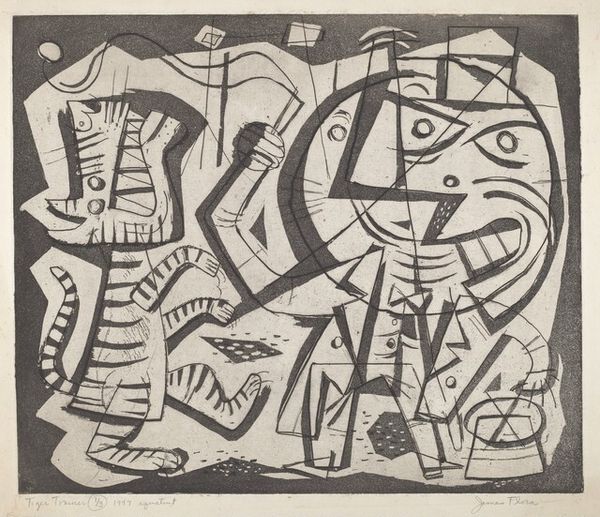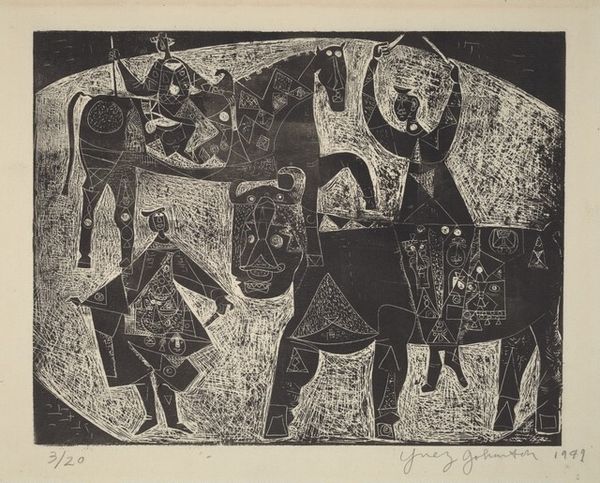
print, woodcut
#
abstract-expressionism
# print
#
figuration
#
form
#
geometric
#
woodcut
#
line
Dimensions: image: 34.7 x 25.8 cm (13 11/16 x 10 3/16 in.) sheet: 46.6 x 32.5 cm (18 3/8 x 12 13/16 in.)
Copyright: National Gallery of Art: CC0 1.0
Curator: Leonard Nelson's "Dance to Jehive," a woodcut print from 1948. It's incredibly striking. Editor: It certainly has an arresting visual power. It gives me the impression of tribal masks or some sort of archaic symbolic script. The high contrast and sharp angles lend it an almost aggressive energy. Curator: As a woodcut, the work would have been produced by carving into a woodblock, removing the areas that are white in the print, and leaving the black lines raised. The act of carving itself, the labor, the decisions of what to remove, becomes a crucial part of its meaning. Nelson printed only fifteen impressions, so there's an element of rarity at play, and each piece reflects its making. Editor: The composition, too, is crucial to understanding this piece. The interplay between geometric abstraction and figurative elements. Look at the upper right, a profile of what appears to be two figures superimposed, but rendered in severely stylized, angular shapes. These geometric shapes create visual tension. Curator: These visual motifs certainly have their precedents, such as, perhaps, Picasso, whose printmaking processes focused on reduction and recycling of the same metal plates for both linocuts and etchings in the late 50's and 60's. Nelson was very conscious of this and perhaps, consciously rejecting such strategies with the complexity that emerges. Editor: Interesting to mention a strategy from after the print was made; and indeed, Nelson has crafted a sophisticated arrangement of line and shape here. The heavy, dark lines give the composition weight. Consider how the black background and negative space both define and flatten the pictorial space, further highlighting the rhythmic pattern making. There is something very considered. Curator: To think about the time in which it was produced – post-war America, with its industrial boom, informs an artist using an old process like the woodcut; perhaps as a rebellion against the rise of consumerism and mechanized labor. There's almost an archaeological quality to its production. The "Dance" is as much a document of mid-century social context as it is of artistic talent. Editor: It truly offers a compelling juxtaposition, seeing modern sensibilities expressed through such a historical craft. Thanks for lending your materialist eye. Curator: And thank you for exploring the nuances within. The print is much richer with our collaborative look.
Comments
No comments
Be the first to comment and join the conversation on the ultimate creative platform.
